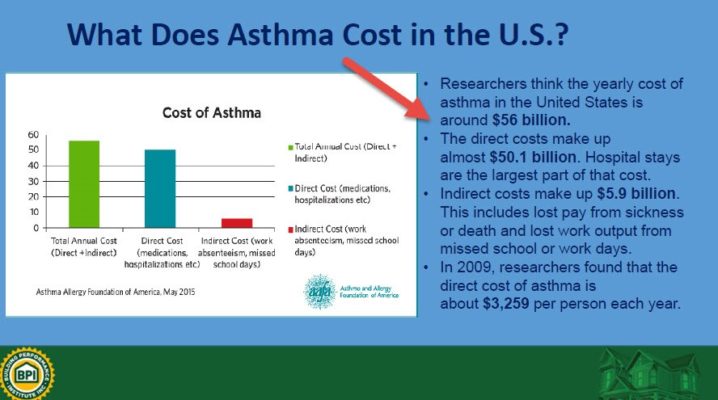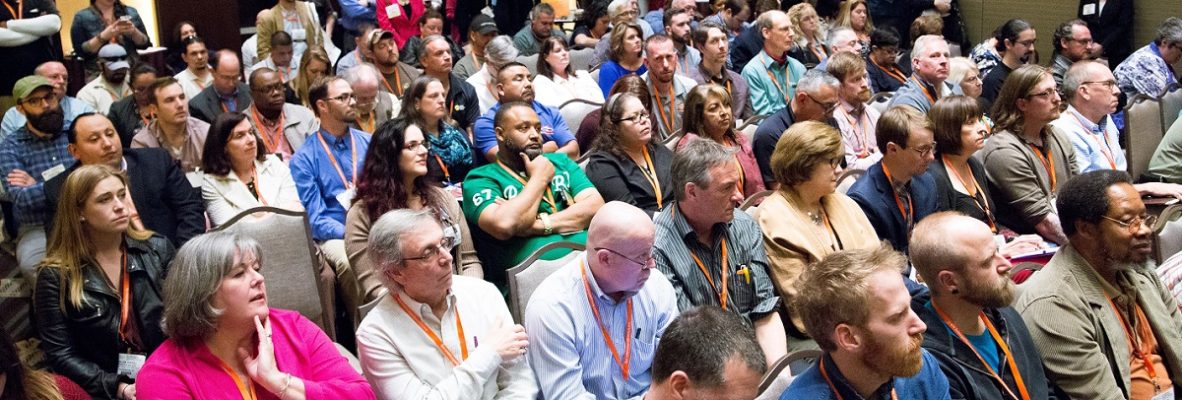by Julie Michals
People flocked to healthy homes sessions at the Home Performance Coalition’s largest-ever conference last month. Non-energy benefits associated with energy efficiency upgrades have long been discussed, but this was the first time an HPC conference track was devoted exclusively to healthy housing and indoor air quality (IAQ).
Sessions covered technical topics and current research, discussed innovative program designs, and provided healthy home assessment education. See the set of presentations here.
I was pleased to moderate a vibrant panel among these offerings: What Do We Really Know About the Health Benefits of Energy Upgrades? with experts Ellen Tohn, Kevin Kennedy, Jonathan Wilson, Ely Jacobsohn and Jonathan Cohen. See details below.
We were not alone in our excitement for the inaugural healthy housing track. Eager to learn about this emerging field, attendees filled each session (often beyond capacity). Central to this discussion is how to support the existing home performance workforce to leverage this massive opportunity: The IAQ market is projected to total $10.8 Billion by 2021.* Asthma costs have soared to $56 billion annually. How can we address and leverage this within home performance?
What I heard at IAQ track sessions:
- – “Our industry faces the conundrum of how to best get connected to the health industry.”
- – “Homeowner case studies showing a local connection are critical to build understanding of the value of integrated programs for legislators, hospitals, and others.”
- – “A key opportunity for successfully integrating programs is to find managed health care providers that are receptive to prescribing healthy home assessments.”

Source: Larry Zarker
What Do We Really Know About the Health Benefits of Energy Upgrades?
The session I moderated sparked audience questions on the current and emerging business models for integrated programs, and credentials needed to conduct a healthy home assessment. A few highlights:
- – High-level vision of integrated programs, key opportunities and challenges, on-the-ground programs leveraging funds and co-benefits (Kevin Kennedy)
- – Takeaways from complementary reports by E4TheFuture and U.S. DOE on studies of health co-benefits; results and data gaps (Ellen Tohn, Jonathan Wilson)
- – Key elements of US DOE’s Roadmap for Integrating Health into Home Performance; how to support the existing workforce (Ely Jacobsohn, Jonathan Cohen)
- – Current training efforts and the new Healthy Home Evaluator credential, the product of a partnership between the Building Performance Institute (BPI) and Green and Healthy Homes Initiative (GHHI). This credential allows certified BPI Building Analysts and Energy Auditors to build upon their expertise to incorporate environmental health and safety into home assessments to deliver integrated energy plus health-related interventions (Kevin Kennedy)
- – Importance of integrated programs from a regulatory perspective; good data essential to account for participant non-energy benefits in cost-effectiveness analyses (see forthcoming National Standard Practice Manual—near and dear to my heart!)
When you consider that people spend 80-90% of their lives indoors, it’s no wonder that changing the indoor environment through energy efficiency creates health co-benefits that are real and valuable. I’m grateful to the Home Performance Coalition team for their vision in creating the conference track. It helped to illuminate the power, complexity and opportunities related to this emerging field.
Looking Forward
E4TheFuture continues to engage as this field evolves. We invite you to Steve Cowell’s session on this topic at the US DOE Better Buildings Summit May 15-17. Upcoming conferences that include experts tackling program integration include the Northeast Indoor Air Quality & Energy Conference May 1-3, and the National Energy and Affordability Utility Coalition Conference June 26-28.
We hope to see you out there!
–Julie Michals is E4TheFuture’s Director of Clean Energy Valuation
